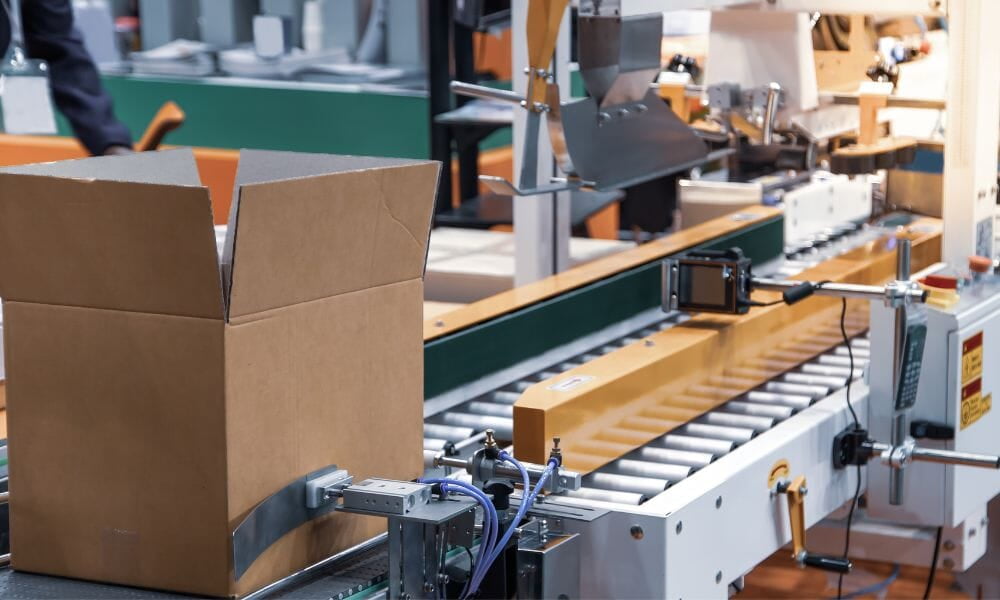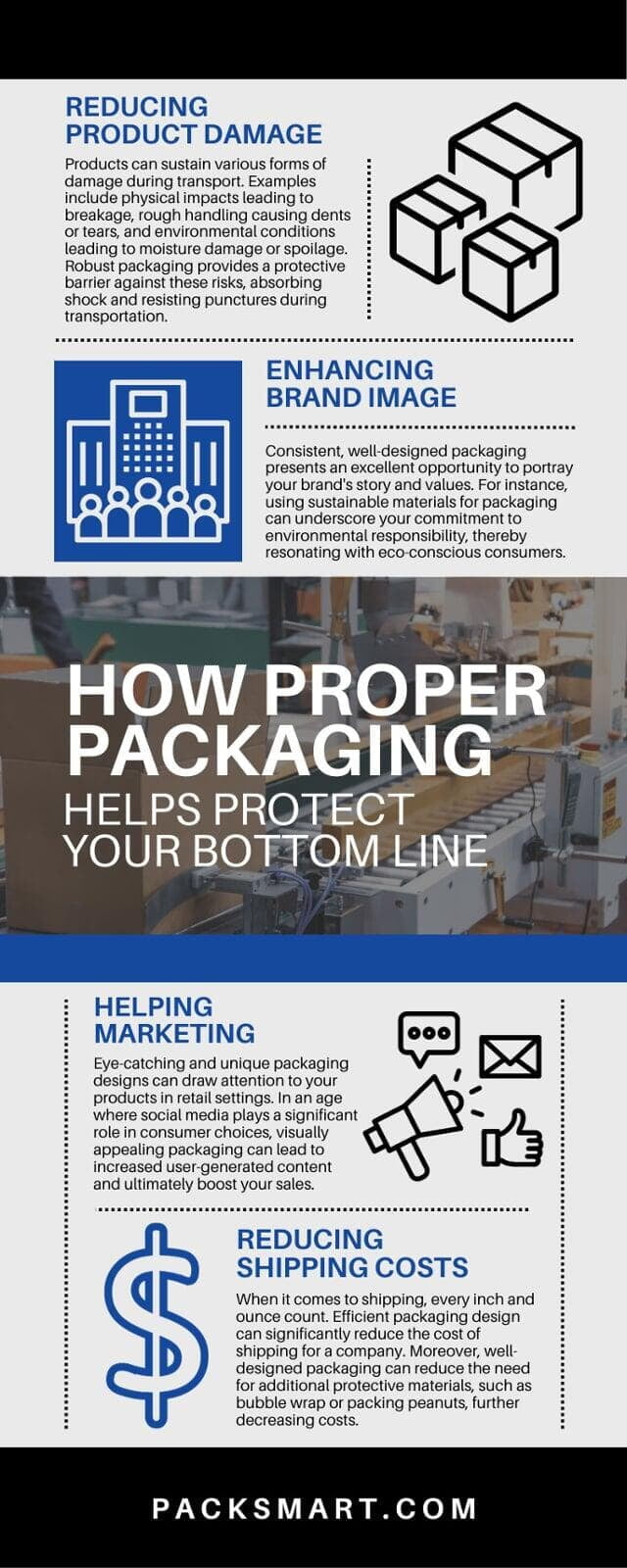
In an increasingly competitive business landscape, companies must seize every opportunity to maximize their profitability. One such chance lies in optimizing packaging practices. Packaging plays an instrumental role in protecting products and enhancing brand image.
By investing in proper packaging, businesses can reduce shipping expenses and costs associated with product damage during transit. Learn how proper packaging helps protect your bottom line and tips for optimizing your process.
Reducing Product Damage
One of the primary goals of packaging is to protect the product during transit. Products can sustain various forms of damage during transport. Examples include physical impacts leading to breakage, rough handling causing dents or tears, and environmental conditions leading to moisture damage or spoilage. Robust packaging provides a protective barrier against these risks, absorbing shock and resisting punctures during transportation.
Damaged goods often result in returns or replacements. These not only cost your business money but can tarnish your brand's reputation. By investing in proper packaging that can withstand the rigors of transit, you minimize the risk of product damage, thus reducing return and replacement costs.
Enhancing Brand Image
High-quality packaging plays a vital role in shaping your brand's image and reputation. When customers receive a well-presented and carefully packaged product, it creates a sense of professionalism and trust in your brand.
Consistent, well-designed packaging presents an excellent opportunity to portray your brand's story and values. For instance, using sustainable materials for packaging can underscore your commitment to environmental responsibility, thereby resonating with eco-conscious consumers.
Pro-Tip: Highlight Your Brand to Increase Customer Loyalty
Similarly, innovative or unique packaging designs can highlight your brand's creativity and set you apart in a crowded marketplace. They also signal your commitment to quality and customer satisfaction. By investing in quality packaging, you build a strong and positive brand image, which can convert into increased customer loyalty and sales.
Helping Marketing
Never underestimate the power of packaging as a marketing tool. Eye-catching and unique packaging designs can draw attention to your products in retail settings. In an age where social media plays a significant role in consumer choices, visually appealing packaging can lead to increased user-generated content and ultimately boost your sales.
Additionally, packaging that reflects your brand's values and tells your unique story can set you apart from the competition. By carefully choosing the design, materials, and messaging for your packaging, you create a holistic marketing asset that captivates potential customers and supports your sales efforts.
Pro-Tip: Combine Style and Function
Attractive and functional packaging can prompt customers to come back for more. For example, innovative packaging designs that make the product more accessible or easy to store can create excitement and buzz around your brand. When you combine aesthetically pleasing and practical packaging, customers will associate your products with positive experiences. This will entice them to keep shopping at your business and ultimately increase your revenue.
Reducing Shipping Costs
When it comes to shipping, every inch and ounce count. Efficient packaging design can significantly reduce the cost of shipping for a company. Moreover, well-designed packaging can reduce the need for additional protective materials, such as bubble wrap or packing peanuts, further decreasing costs.
1. Choose the Right Packaging Materials
Selecting the appropriate packaging materials can make a huge difference in shipping costs. For example, using a lightweight material, such as corrugated cardboard, can save money on both weight and shipping fees.
2. Consider Dimensional Weight
Dimensional weight, also known as volumetric weight, is a pricing technique that shipping carriers use to account for the space that a package takes up on their trucks or planes. This means that even if your package is lightweight, you may still face charges based on size rather than weight. To avoid this extra cost, consider optimizing your package dimensions. You want to minimize wasted space.
3. Use Appropriate Box Sizes
Using the right-sized boxes can also help cut down on shipping costs. When shipping smaller items, avoid using large boxes that leave excess space. This will not only increase dimensional weight charges but also require additional packaging materials to fill the empty space. Instead, choose a box that’s just the right size for your product.
Ensuring Regulatory Compliance
Naturally, different industries are subject to different packaging regulations. For instance, the food, pharmaceuticals, and cosmetics industries, as well as certain chemical industries, all have strict guidelines to ensure safety, quality, and the provision of accurate information to consumers. Guidelines may include specifications about the materials used, labeling requirements, and even temperature control during transportation.
For businesses in these sectors, proper packaging isn't merely beneficial—it's a legal necessity. Non-compliance with these regulations can result in severe financial penalties, delays due to product recalls, and a tarnished brand reputation.
Compliant Packaging Eases Entry Into New Markets
Furthermore, regulatory non-compliance can lead to barriers to entering certain markets, hindering a business's expansion plans. Understanding and integrating these guidelines into the packaging design from the outset can ensure seamless, trouble-free market access.
By ensuring your product packaging complies with both domestic and international regulations, you can confidently expand your business into new markets, avoid potential legal complications, and maintain a strong, trusting relationship with your consumers. These factors highlight how proper packaging helps protect your bottom line.
Promoting Sustainability
Today's consumers are increasingly environmentally conscious, and businesses must adapt accordingly. Implementing sustainable packaging practices not only appeals to eco-minded customers but can also contribute to overall cost savings. By using less packaging material without sacrificing protection, businesses can reduce material usage and waste, which is great for the environment and budgets.
Automation Minimizes Waste
Investing in advanced packaging supplies and equipment can significantly enhance a business's packaging sustainability. For instance, equipment like a stretch wrapper can optimize the use of plastic wrap, reducing waste and improving efficiency.
Void fill machines contribute to sustainability by optimizing the amount of fill used, thereby reducing waste. These machines precisely measure the required void fill, preventing overfilling and ensuring maximum efficiency. Furthermore, many void fill solutions consist of recycled or compostable materials, further augmenting the eco-friendliness of packaging processes.
Effective packaging strategies help maintain a healthy bottom line. They minimize product damage, foster a positive brand image, serve as an influential marketing tool, and promote cost-effective shipping. Moreover, complying with packaging regulations and embracing sustainability in packaging practices can shape consumer perception for the better while opening new market opportunities. Optimizing your business’s packaging line with the right equipment, materials, and techniques is a strategic move that can yield significant returns.

